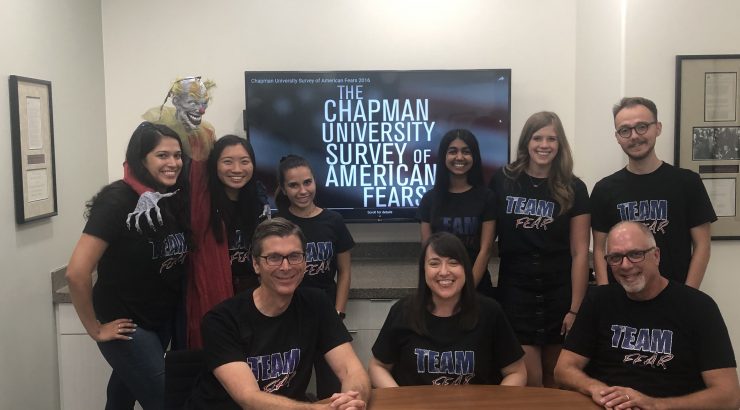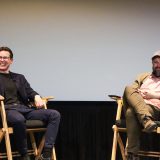
Research Students Work All Summer Long Collecting Data for Fear Survey
August 12, 2019
Each summer, a team of undergraduate researchers are assembled to work on The Chapman University Survey of American Fears (an in-depth examination into the fears of average Americans) and are supervised by Wilkinson Professors Chris Bader, Ed Day and Ann Gordon, meeting once a week out of The Babbie Center and Henley lab. The students work on group projects, such as researching new content areas for the FEAR survey and then analyzing the results later in the summer, receiving advanced training in statistics, research methods, data analysis and specialized software, beforehand.
In addition, each student works on an individual research project, closely supervised by the Fear Faculty, that they can present at a conference or research symposium later in the year.
“Working as a Wilkinson Research Fellow this summer has given me the chance to collaborate with three incredible faculty members on the Chapman Survey of American Fears, as well as learn from my own peers. I am grateful for the opportunity to have gained invaluable experience in statistical programming and quantitative research,” said Corinne Tam ( Sociology, Honors Program, ’20).
This summer, students also had the chance to prepare a report on fear and disaster preparedness in Orange County. This report will be presented (by the students and professors) to more than 60 emergency managers in Orange County at the OC Emergency Managers Organization (OCEMO) meeting in September.
Finally, if that’s not enough, with the Southern California earthquakes hitting close to home in early July, Muhammad Karkoutli (Political Science, Economics, ’20) and Syd Kotar (Political Science, Chemistry ’19) were asked to collect data for the Virtual Earthquake Reconnaissance Team (Vert).
“Working in the Babbie Center this past summer has impressed upon me the importance of research and its applicability to the world outside of the classroom. For example, I was able to get out into the field and observe the aftermath of the Ridgecrest earthquakes. Upon returning to campus, I used this field experience to guide my data analysis of relevant hashtags and phrases on social media. Besides field work, I had the opportunity to collaborate with faculty and fellow student researchers on Chapman’s Survey of American Fears. Drawing on this survey’s data, I worked on an individual research project where I investigated what fears made an American more likely to fear cyber-terrorism,” said Karkoutli. “Conducting research at the Babbie Center has, in my opinion, sharpened my analytical and critical thinking skills and allowed me to put into practice what I have learned in the classroom.”
Take a look at the blog they authored How Residents of Ridgecrest Mistook a 6.4 Magnituture Earthquake for a Bomb.
This opportunity has given students more then they could ever imagine and they know this type of one-on-one research and collaborative efforts doesn’t happen just at any college.
“I have worked on coding emergency preparedness ads by FEMA and creating a dataset, conducting research of topics on terrorism and disasters, and analyzing multiple waves of the Chapman Survey of American Fears,” said Shreya Sheth (Peace Studies, Honors Program, ’21). “From running regressions with students on finals night to organizing a focus group for an emergency preparedness project, every opportunity has excited and challenged me as a researcher. I feel incredibly fortunate to work alongside amazing faculty mentors and lab fellows,” she said.
Team FEAR is comprised of students and faculty across the college and across research centers and they concentrate on writing a new survey, fielding it, and analyzing results. Much of the new content added to the survey each year is contributed by these students every summer.
“Some of the students work just for the summer, others will continue in the fall as well. All students finish the summer with work that can be presented or submitted for publication and all students have new, impressive content to add to their résumés,” said Professor Gordon.

